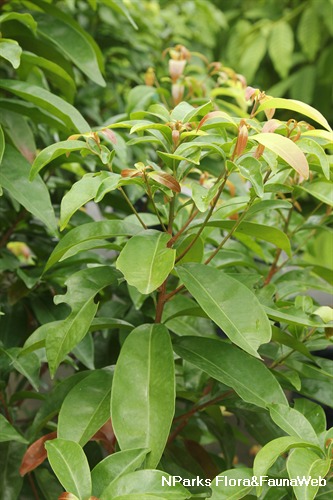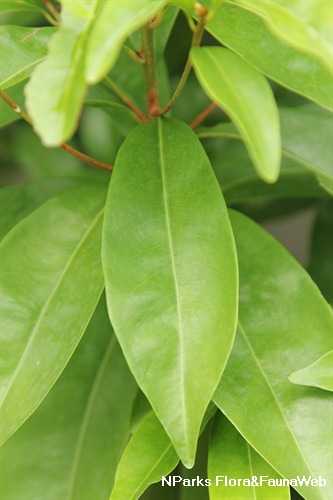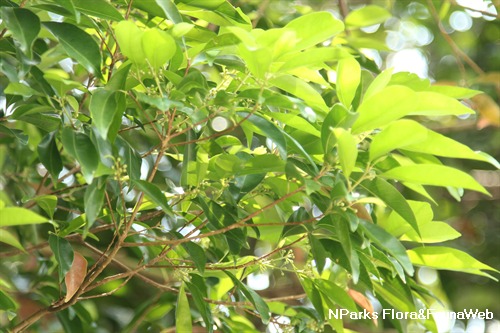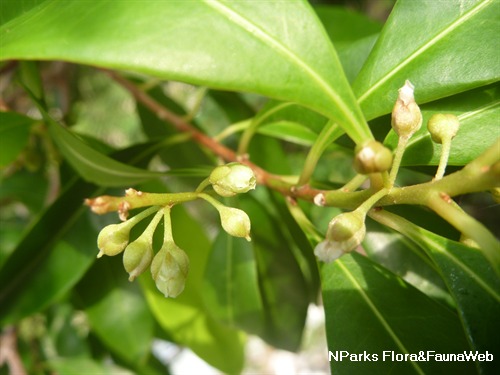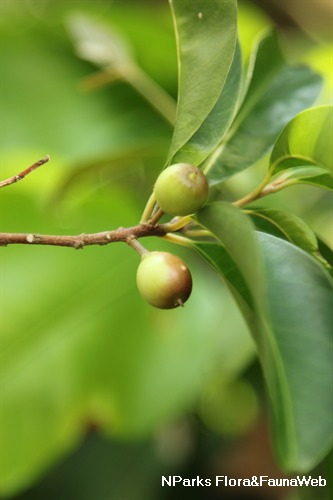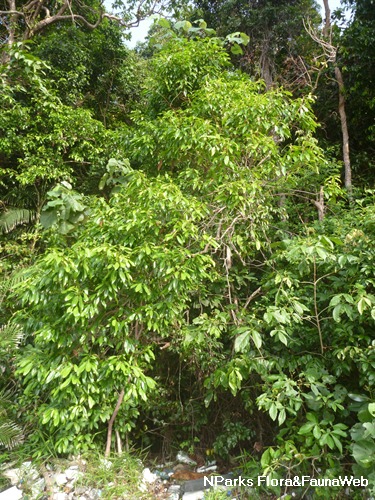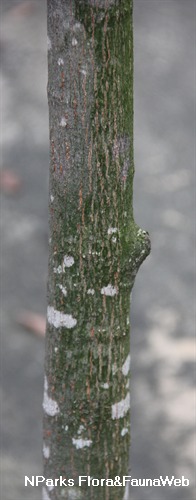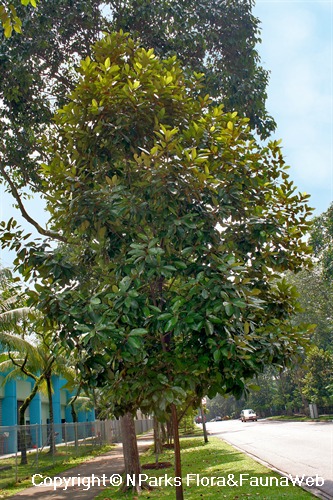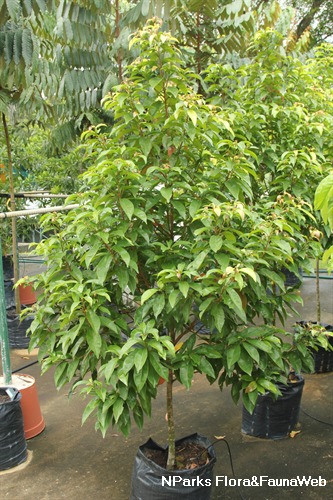
Back
Planchonella chartacea (F.Muell. ex Benth.) H.J.Lam
| Family Name: | Sapotaceae |
| Synonyms: | Pouteria chartacea (F.Muell. ex Benth.) Baehni, Pouteria linggensis (Burck) Baehni, Planchonella linggensis (Burck) Pierre |
| Common Name: | Jeliti |
Name
Classifications and Characteristics
| Plant Division | Angiosperms (Flowering Seed Plants) (Dicotyledon) |
|---|---|
| Plant Growth Form | Tree (Medium (16m-30m)) |
| Lifespan (in Singapore) | Perennial |
| Mode of Nutrition | Autotrophic |
| Plant Shape | Irregular |
| Maximum Height | 18 m |
Biogeography
| Native Distribution | Sumatra, Peninsular Malaysia, Singapore, Borneo, the Philippines, Sulawesi, Papau New Guinea, northern Australia, and the Pacific Islands |
|---|---|
| Native Habitat | Terrestrial (Coastal Forest), Shoreline (Rocky Beach) |
| Preferred Climate Zone | Tropical |
| Local Conservation Status | Native to Singapore (Critically Endangered (CR)) |
Description and Ethnobotany
| Growth Form | It is a tree up to 18 m tall. |
|---|---|
| Foliage | Its alternate, stalked leaves have papery leaf blades that are elliptic to lance-shaped, and 4–16.5 by 1.5–6 cm. |
| Flowers | Its small, greenish-yellow flowers develop in compact clusters of 1–7. |
| Fruit | Its 1–5-seeded fruits are mostly egg-shaped, 1–2 by 0.5–1.3 cm, and ripen purplish. Its seeds are 7–15 by 4–6 mm. |
| Habitat | It grows along rocky seashores, and in coastal forest up to 400 m altitude. |
| Associated Fauna | Its flowers are insect-pollinated, and fruits are probably eaten by birds. |
| Cultivation | It can be propagated by seed. |
| Etymology | Planchonella, after Jules Émile Planchon (1823-1888), a French botanist born in Ganges, Hérault, France. Latin chartacea, parchment-like, papery, referring to the texture of the leaves. |
Landscaping Features
| Landscaping | It is rather attractive as it has a compact, dark green crown. It is a tree suitable for gardens, parks and roadsides. |
|---|---|
| Desirable Plant Features | Ornamental Form |
| Landscape Uses | General, Suitable for Roadsides, Parks & Gardens, Small Gardens, Coastal, Beachfront / Shoreline |
Fauna, Pollination and Dispersal
| Fauna Pollination Dispersal Associated Fauna | Bird-Attracting |
|---|---|
| Pollination Method(s) | Biotic (Fauna) |
| Seed or Spore Dispersal | Biotic (Fauna) |
Plant Care and Propagation
| Light Preference | Full Sun |
|---|---|
| Water Preference | Moderate Water |
| Plant Growth Rate | Moderate |
| Rootzone Tolerance | Drought Tolerant, Moist Soils, Well-Drained Soils, Saline Soils / Salt Spray, Fertile Loamy Soils |
| Propagation Method | Seed |
Foliar
| Foliage Retention | Evergreen |
|---|---|
| Mature Foliage Colour(s) | Green |
| Mature Foliage Texture(s) | Papery |
| Prominent Young Flush Colour(s) | Orange, Red |
| Foliar Type | Simple / Unifoliate |
| Foliar Arrangement Along Stem | Alternate |
| Foliar Attachment to Stem | Petiolate |
| Foliar Shape(s) | Non-Palm Foliage (Ovate) |
| Foliar Venation | Pinnate / Net |
| Foliar Margin | Entire |
Floral (Angiosperm)
| Flower & Plant Sexuality | Bisexual Flowers |
| Flower Colour(s) | Cream / Off-White, Green - Light Green |
|---|---|
| Flower Grouping | Cluster / Inflorescence |
| Flower Location | Axillary |
Fruit, Seed and Spore
| Mature Fruit Colour(s) | Green - Light Green, Purple |
|---|---|
| Fruit Classification | Simple Fruit |
| Fruit Type | Fleshy Fruit , Non-Accessory Fruit |
Image Repository
Others
| Master ID | 30296 |
|---|---|
| Species ID | 4605 |
| Flora Disclaimer | The information in this website has been compiled from reliable sources, such as reference works on medicinal plants. It is not a substitute for medical advice or treatment and NParks does not purport to provide any medical advice. Readers should always consult his/her physician before using or consuming a plant for medicinal purposes. |

